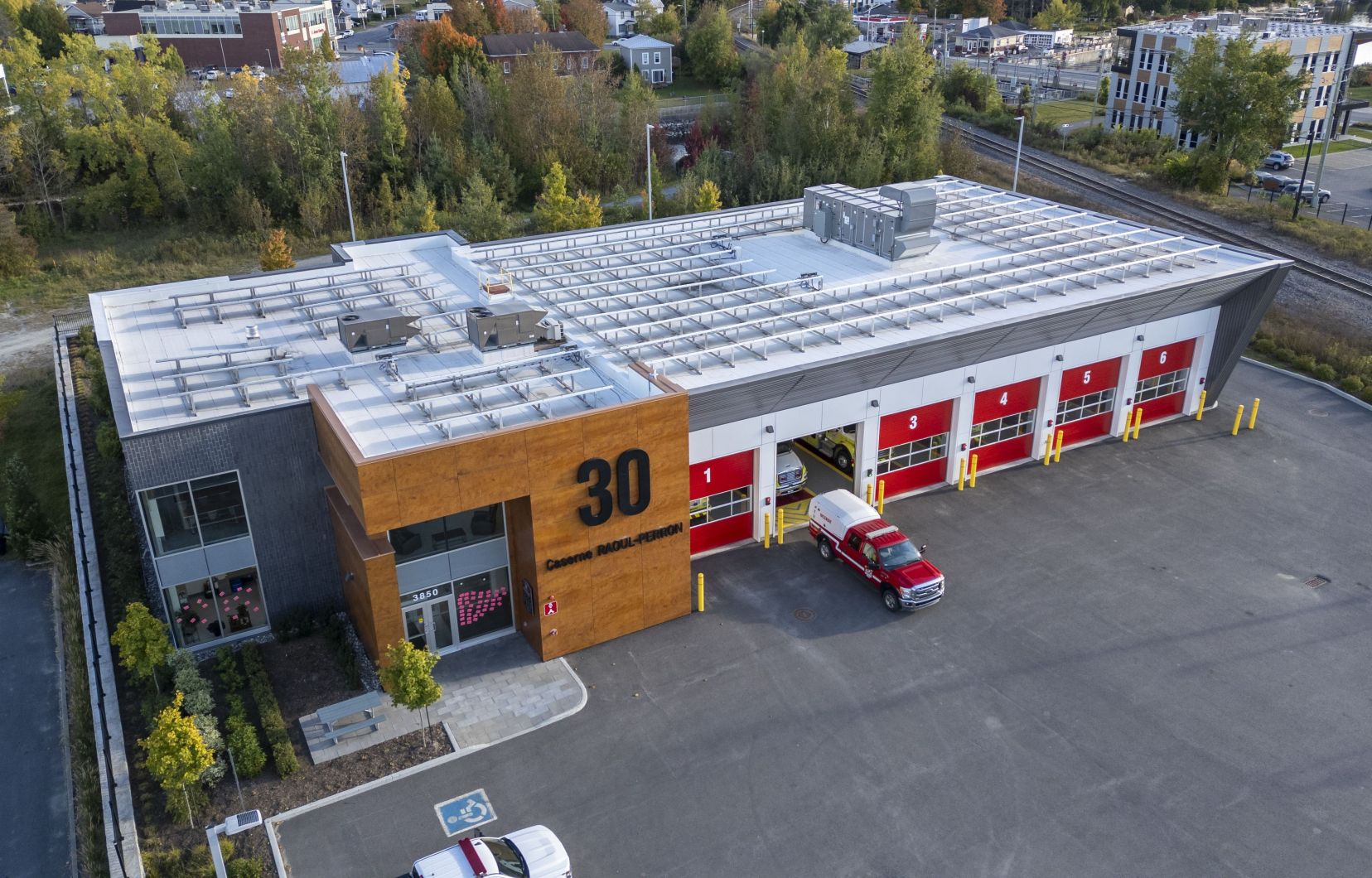This text is part of the special Energy Transition section
Since 2021, the city has been experimenting with Quebec’s first municipal microgrid, a feat that is the pride of Mayor Julie Morin.
What is a microgrid? It is simply a local network that produces its own electricity and can operate self-sufficiently. “But we are not at the point of selling excess energy to Hydro,” adds the mayor.
The genesis of the project dates back to the railway tragedy of 2013. Citizens, traumatized by hydrocarbons, had expressed the wish to experiment with new forms of renewable energy such as wind or solar power. Within Hydro-Québec, a similar idea was gaining ground: testing large-scale decentralized production.
However, the reconstruction of downtown Meganticois offered the perfect opportunity and, from 2018, the municipality and the state company came to an agreement: Hydro-Québec will install 2,200 solar panels on around thirty buildings, batteries and home automation systems. And since 2021, it’s been working.
Hardware store and living laboratory
In fact, the Méganticois project consists of a collage of several technical and human experiments. On a technical level, the Méganticois microgrid allows, when the sun has shone sufficiently, to operate in a self-sufficient manner from the network for up to eight hours, explains Julie Morin. Within a well-defined perimeter, the microgrid can also operate autonomously in the event of an outage. “Hydro-Québec frequently produces outages to see how the system reacts, and no one sees them. »
In addition to home automation, Hydro-Québec tests various systems on new or existing buildings for residential, commercial and institutional customers. This allows you to see how the various batteries in place work, but also the various types of panels and installation methods.
“At the station, we even have the first electric vehicle terminal which is recharged locally using solar panels,” explains the mayor.
In addition to certain reductions in electricity bills, Mme Morin sees it as a very beautiful business card for his city. “It raises a lot of interest. We welcome researchers. For tourists, we have set up a tour and an exhibition at the heritage station, in addition to two tourist guides attached to Hydro-Québec. »
The mayor is particularly proud of the social aspect of the living laboratory, particularly with regard to home automation. Because who says microgrid also says communication on the importance of good energy management and familiarization with new techniques such as heat pumps or thermal accumulators.
“Not everyone is comfortable with a smartphone or concepts like preheating water,” she says. Understanding how citizens respond requires Hydro to come from the other side of the meter. This is an important part of the experience. »
Hydro-Lac-Mégantic?
In any case, this test bench is of great interest, if only because of the rarity of solar experiments in Quebec.
“A municipal microgrid has big advantages, particularly in terms of reliability, peak management and more rational use of equipment,” says Ursula Eicker, professor of building, civil and environmental engineering at Concordia University and holder of the Canada Excellence Research Chair in Smart, Sustainable and Resilient Communities and Cities. “But we would like Hydro-Québec to open up its data more to researchers. »
From Hydro-Québec’s point of view, we already know that there will be a sequel, because microgrids present very clear advantages in terms of resilience.
“We are considering a microgrid for five other municipalities, but it will not necessarily be for just any of them,” explains Claudine Bouchard, executive vice-president and head of operations and infrastructure at Hydro-Québec, which has not, however, not yet finalized list. “For us, the ideal situation is a municipality that ultimately has supply reliability issues. »
On the Lac-Mégantic side, we are very proud of the evolving nature of the microgrid, which was recently able to integrate two major new buildings: the new barracks and its 200 bifacial solar panels, as well as the Le Chevalier project, a community hall with 200 seats with 21 social housing units and equipped with hybrid panels producing both electricity and hot water.
“The system is capable of growing, even if it requires adjustments,” indicates Julie Morin. Currently, we are reaching the capacity of the station’s two megabatteries. »
As for what happens next, discussions are underway with Hydro, which owns the facilities.
“In principle, at the end of the project, Hydro-Québec would transfer everything to the community, but we are currently discussing the continuation,” indicates Julie Morin. Do we renew the agreement and expand the microgrid? Do we transfer everything to the building owners? Or what if we transform it into a municipal management or a cooperative? »
Will we see the emergence of a Hydro-Lac-Mégantic like Hydro-Sherbrooke and Hydro-Westmount, to name only the two largest municipal distribution networks in Quebec, currently numbering ten? “Lac-Mégantic is not starting from scratch,” replies the mayor, who recalls that her city is already participating in the community wind farm of the MRC du Granit.
This content was produced by the Special Publications team at Dutyrelating to marketing. The writing of the Duty did not take part.
